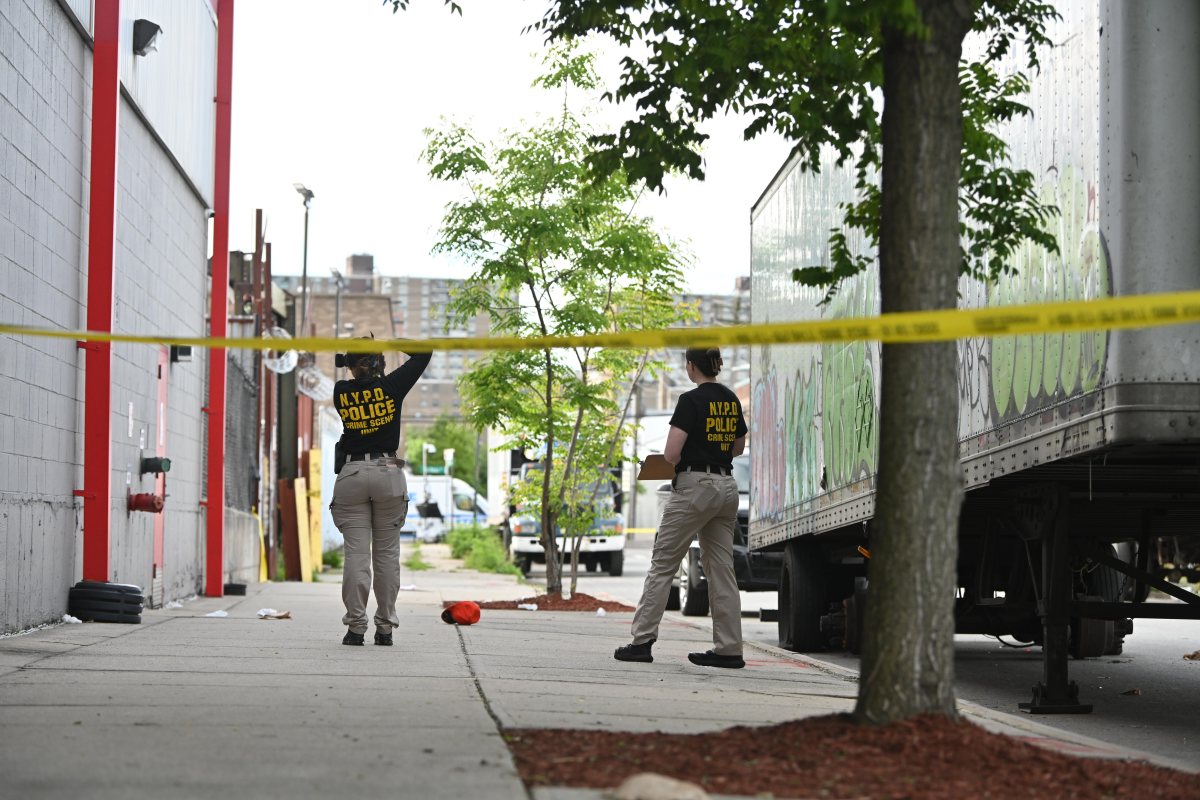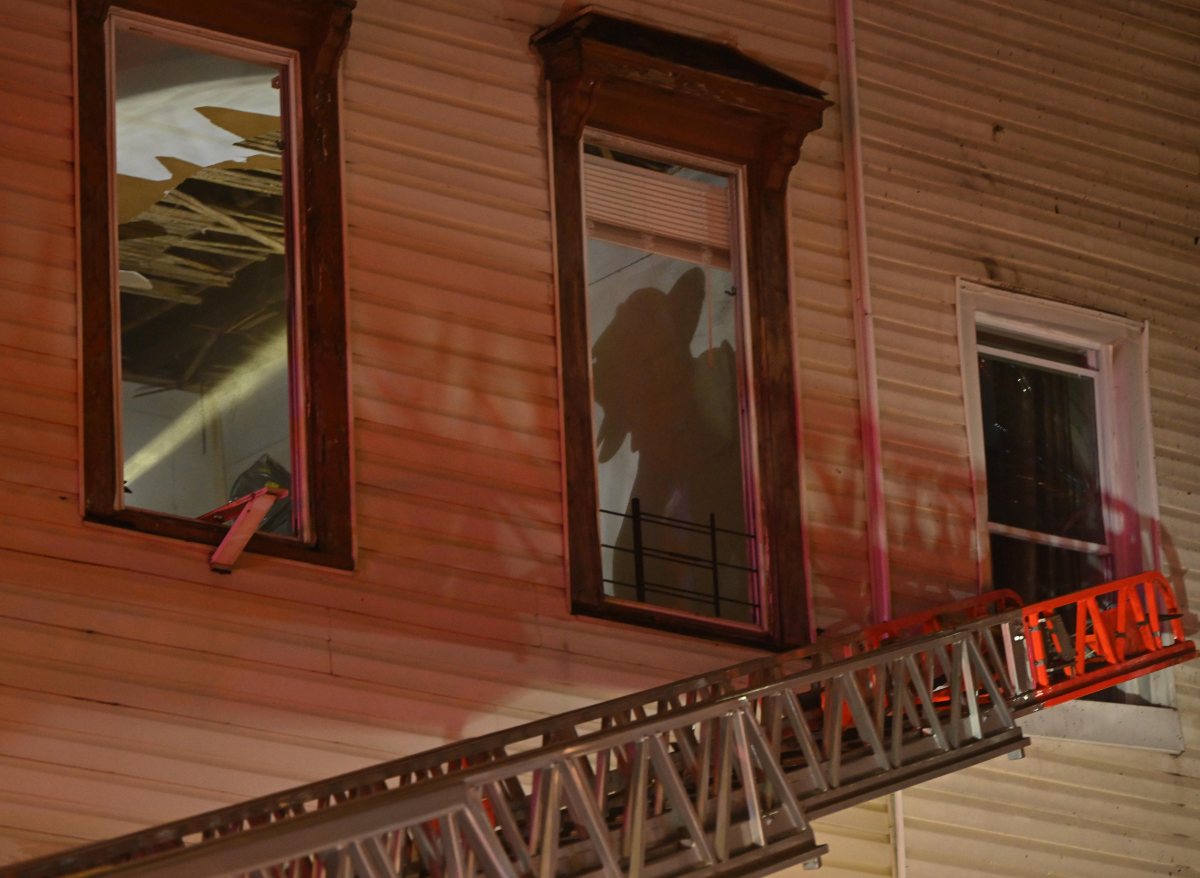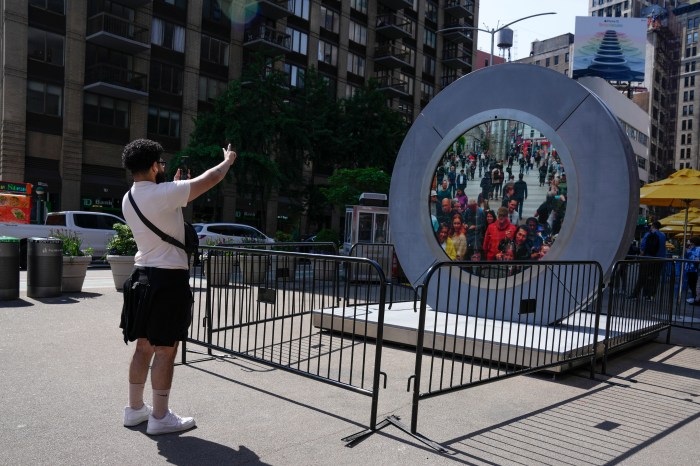The county of Kings is poised to add presidents, prime ministers and diplomats
to its roster.
Secretary-General Kofi Annan said in a report he issued Tuesday that the
United Nations — looking for a temporary home while its iconic glass-and-steel
headquarters on the East River gets a long-overdue renovation — may
have found commercial space in Downtown Brooklyn that could serve its
Secretariat and General Assembly needs.
The United Nations has a staff of nearly 3,000 and its General Assembly
meetings requires a conference hall big enough to seat 1,800.
But far from languishing, as plans to expand in Manhattan have, the interest
from the United Nations could help spur new development in Downtown Brooklyn,
which passed a major rezoning initiative in August but has failed so far
to see much new construction sprout forth.
“It’s going to be a reminder to a lot of people that Downtown
Brooklyn is successful and a real downtown,” said Kenneth Adams,
president of the Brooklyn Chamber of Commerce. “Even if it’s
only temporary, it puts Brooklyn on the international stage. Think of
it — Geneva, the Hague, Brussels and now Downtown Brooklyn. It’s
in the company of classic European cities.”
The report assessed where things stand with plans to renovate the U.N.
Secretariat building, which was considered modern when it was constructed
50 years ago but now violates most New York City fire and safety codes.
The 38-story tower has no sprinkler system, is packed with asbestos and
leaks about 25 percent of the heat pumped into it in the winter.
Annan said a search of more than 100 properties in Manhattan turned up
nothing that satisfied its needs for both office and conference space.
One possibility that planners looked at was 7 World Trade Center, which
is expected to open next year, officials said.
A major issue is figuring out where to hold the annual General Assembly
debate when world leaders descend on New York for several days.
The Brooklyn space, likely within the boundaries of the new zoning plan,
could fit the bill, Annan’s report indicated. The report estimated
that the Brooklyn site would cost the United Nations between $211 million
and $220 million and would include needed conference space. A Midtown
Manhattan location, on the other hand, would cost between $221 million
and $230 million, plus another $45 million for conference space, according
to the report.
The Downtown Brooklyn Plan adopted last August hopes to encourage more
than 6 million square feet of office development and 1 million square
feet of retail and residential development — in part by allowing
buildings to rise up to 400 feet — and thus help retain back-office
space in the city and keep corporations from fleeing to New Jersey.
Joseph Sitt, a developer who owns both an above-ground parking-lot along
Flatbush Avenue Extension and Willoughby Square and the adjoining Gallery
at Fulton Mall, told reporters that he had been contacted by U.N. officials
about the 1.2 million-square-foot office project he has in mind for that
area.
The catch, he said, was that most banks insist on a 10-year-lease from
major tenants and not the seven that the United Nations predicts it will
need while its old home is being renovated.
That new tower would be just one of three city planners expect to flank
a 1.5-acre open space to be known as Willoughby Square.
The park will be created by the seizure of private property through the
state’s power of eminent domain. As part of the total Downtown Plan
approximately 100 residential units and 130 businesses are slated for
demolition.
“One commercial site has been found that would accommodate both office
and conference space,” Annan wrote in the report. “It is part
of a larger development in Downtown Brooklyn. It consists of both office
space, some of which could be occupied as is, and space that the developer
would build out to accommodate conferences. The advantage of this site
is that conference and office space would be together.
“The disadvantage is that the site would require additional travel
for many staff and delegates,” Annan wrote.
But besides a strain on pampered dignitaries, many of whom live in Manhattan,
some Downtown Brooklynites say that relocating the United Nations there
would be a nightmare on traffic and parking in the area.
Vincent Batista, president of the Institute of Design and Construction,
which narrowly averted being demolished under the new zoning plans, said
that civil servants already illegally park along a swath of Gold Street
between Willoughby Street and Myrtle Avenue without the fear of repercussions.
Similarly, say some who are less than enthusiastic about the prospect
of a diplomat-filled downtown, the United Nations staff and dignitaries
have raised the ire of city and state lawmakers by refusing to repay $220
billion in parking tickets.
“You talk about illegal parking now, well, this will be worse,”
said Batista. “At the U.N., they have diplomatic immunity, so if
the civil servants that are already here aren’t paying up, you think
they will?”
The failure to repay parking violations, said state Sen. Marty Golden,
is one reason he spearheaded a successful campaign in the state Legislature
to block legislation that would have allowed the United Nations to issue
$600 million in bonds to fund construction of a 35-story skyscraper next
to its current headquarters.
The sticking point, Golden and other lawmakers say, centers on the failure
of United Nations diplomats to repay parking tickets, refusal to cooperate
with a congressional investigation into the so-called “oil-for-food”
scandal and refusal to back the United States in the Iraq war.
“In Brooklyn and Queens they really have no love for the United Nations,
and when you go further outside of the city there’s less love, and
when you go to Ohio and Kansas they really wouldn’t give a rat’s
ass if they left and went to Rwanda or France,” said Golden, a Bay
Ridge Republican who believes that the interest in Brooklyn is simply
a strategy to wrangle a better deal in Manhattan.
U.N. officials say the chances of a move to Brooklyn are remote. But even
raising the option revealed just how difficult it has become for the world
body to find a suitable place to stay during the headquarters overhaul.
Even if Albany approves funding for the United Nations anytime soon, the
next-door skyscraper idea wouldn’t be ready until 2010, three years
behind schedule. Those delays would cost the United Nations $114 million,
Annan said.
In the report, Annan also recommended that the United Nations accept a
U.S. offer of a $1.2 billion loan, repayable over 30 years at an annual
interest rate of 5.54 percent, to finance the renovation. The loan offer
expires on Sept. 30.
Michael Burke, director of the Downtown Brooklyn Council, which spearheaded
the Downtown Brooklyn Plan, said that he had not spoken with U.N. officials
about the possible relocation. Still, he believes that to do so, a temporary
headquarters would need to be built from the ground up. The best place
to do that, he said, is in the area owned by Sitt.
“It would bring jobs and would spur additional businesses that would
serve the United Nations,” said Burke. “But think of the prestige
of having an international headquarters in our community.”
— with Associated Press reports














